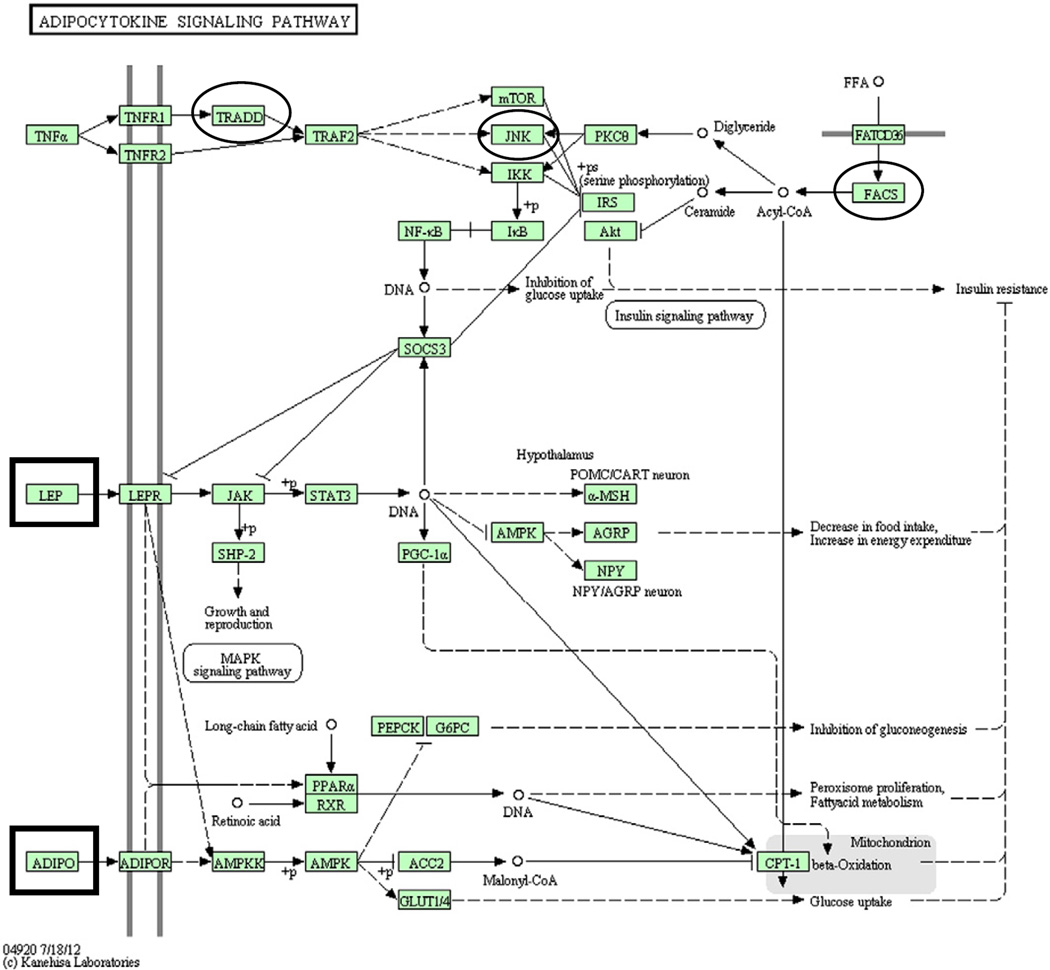Fig. 3.
The adipocytokine signaling pathway as represented in the Kyoto Encyclopedia of Genes and Genomes (KEGG; http://www.genome.jp/kegg/kegg1.html) (Kanehisa and Goto, 2000; Kanehisa et al., 2006, 2010). Connections represent relations between adjacent molecules, with arrows representing activation and blunted lines representing inhibition. Dashed lines indicate an indirect effect. Microarray results found the following genes from this pathway to be up-regulated in FSL rats relative to SD rats: TRADD, acyl-CoA synthetase long-chain family member 1 (FACS; Acsl1), and mitogen activated protein kinase 10 (MAPK10, JNK). A conservative statistical analysis (EASE) indicated overrepresen-tation of this pathway (p=0.06). Results from our human studies indicated significant correlations between adiponectin (Adipo) levels and questionnaire measures of anxiety and depression. Significant correlations were not found between these measures and leptin (Lep) levels. Factors examined in the human component of this study are outlined in rectangles, while those factors found to be differentially regulated in FSL rats are circled.

